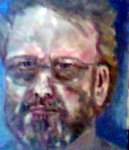
Gilles Benguigui, Idan Porath and I spent some time examining the variety of such facilities in Tel Aviv. First we used the old nearest neighbor method to identify clustering.
The method calculates the ratio between the average short distance between every two points and the expected average short distance of completely spatially random distribution. The ratio of the two is an index for the spatial point distribution and for spatial order.
The method is subject to some well-known drawbacks. It indicates a random distribution of points in cases that there are some clusters with random distribution of points inside the clusters. Also, the results are sensitive to the choice of boundary of the area within which the points are distributed. When the boundary of a geographic entity is ill-defined defined, it is difficult to apply the method.
To deal with this problem we created the all distances analysis. It is free of these defects. The all distances analysis method takes into account the distances between every point to all other points in the examined area.
We concluded that despite first appearances the cultural facilities cluster. Furthermore, there are several distinct clusters, each possessing particular characteristics. These characteristics were confirmed by a detailed survey of users.


2 comments:
Very interesting blogg!
camsmelbourne stripperWant them to know what your name is
Post a Comment